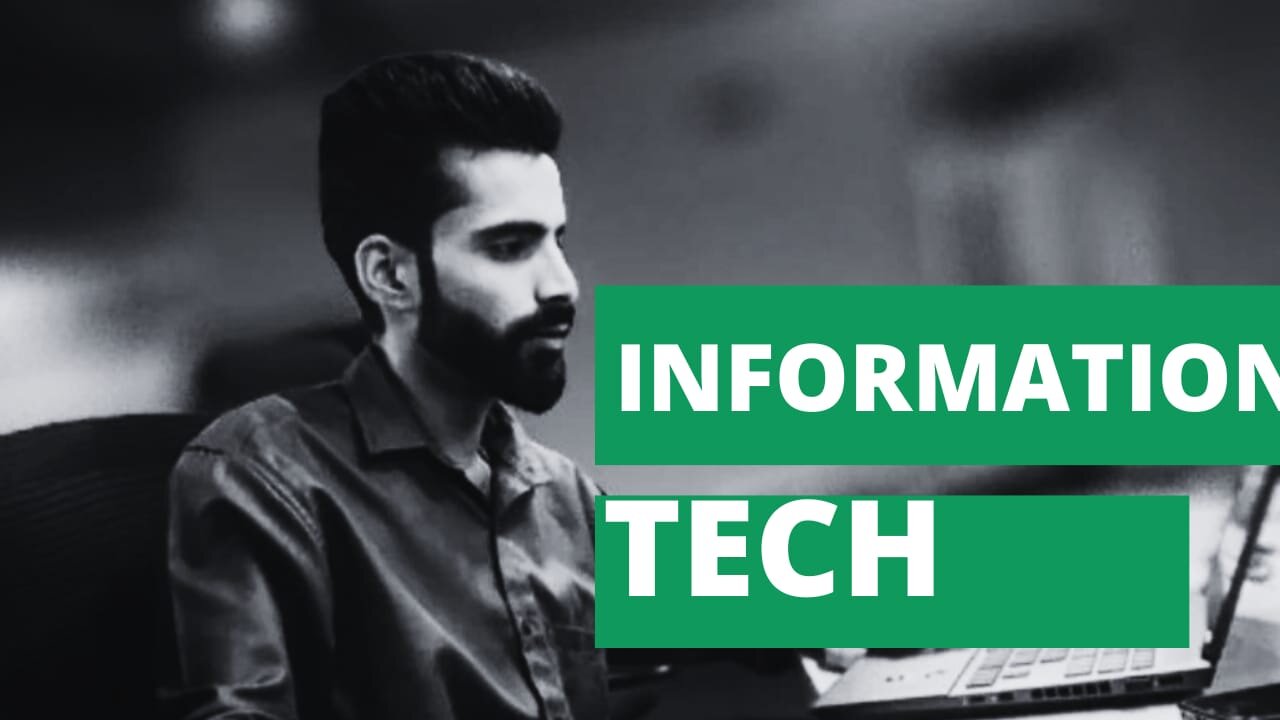Premium Only Content

INFORMATION TECHNOLOGY IN 4 MINUTES
Information Technology (IT) refers to the use of computers, software, networks, and electronic systems to manage, store, process, transmit, and retrieve information. It encompasses a wide range of technologies and practices that enable individuals, businesses, and organizations to handle and manipulate data for various purposes.
In the context of video, Information Technology involves the application of digital tools and techniques to capture, edit, store, transmit, and display video content. This can include:
Video Production and Editing: Using software applications and hardware tools to create, edit, and enhance video content. This encompasses tasks such as video recording, video editing, color correction, special effects, and audio synchronization.
Video Compression and Encoding: Employing algorithms and techniques to reduce the size of video files while maintaining acceptable quality. This is crucial for efficient storage and transmission of video over networks or for streaming purposes.
Video Streaming: The technology behind delivering video content over the internet in real-time. It involves the encoding of video into a format suitable for streaming, as well as the infrastructure to distribute the content to viewers.
Video Conferencing: Utilizing IT solutions to conduct real-time video communication between individuals or groups, regardless of their physical locations. This involves both software applications and hardware devices.
Video Surveillance and Security: Implementing IT systems to capture, monitor, and store video footage for security and surveillance purposes. This can include closed-circuit television (CCTV) systems and advanced video analytics.
Video Analytics: Applying data analysis techniques to video content, often using machine learning and artificial intelligence, to extract meaningful insights, patterns, or information from videos.
Video Storage and Retrieval: Managing the storage, organization, and retrieval of video files using databases, cloud storage, and other technologies.
Virtual Reality (VR) and Augmented Reality (AR): Incorporating video and visual elements into immersive experiences, where digital content is overlaid on the real world (AR) or creates entirely digital environments (VR).
Video Gaming: Integrating video and graphics into interactive gaming experiences, including game design, graphics rendering, and user interfaces.
Video Hardware: Designing, manufacturing, and using hardware components such as cameras, displays, graphics cards, and processors that are optimized for video-related tasks.
Overall, Information Technology for video plays a fundamental role in modern society, impacting entertainment, communication, education, business, and various other sectors. It continues to evolve rapidly, influencing how we create, consume, and interact with video content.
-
 1:00:54
1:00:54
JULIE GREEN MINISTRIES
1 hour agoA SOCIAL MEDIA SHAKEDOWN IS COMING
33.3K95 -
 LIVE
LIVE
The Bubba Army
22 hours agoWorld War 3?! - Bubba the Love Sponge® Show | 7/16/25
2,926 watching -
 17:00
17:00
Preston Stewart
14 hours ago $1.17 earnedRussia Nears Strategic Town
24.2K12 -
 13:46
13:46
BlackBeltBarrister
1 day ago $1.47 earnedLaws NOT Protecting Our Citizens and Culture?!
14.1K12 -
 16:00
16:00
T-SPLY
19 hours agoMember Of Congress Accused Of Joining Violent Mob / LEAKS DHS Information!
11.3K24 -
 1:00:27
1:00:27
Trumpet Daily
21 hours ago $3.96 earnedThe Spirit of Compromise - Trumpet Daily LIVE | July 15, 2025
13.7K3 -
 10:17
10:17
Dr Disrespect
22 hours agoIt's Time To Get Serious
92K16 -
 3:39:10
3:39:10
"What Is Money?" Show
4 days agoBitcoin and the Mystery of Money w/ Robert Breedlove
35.4K2 -
 12:57
12:57
Zoufry
22 hours ago $2.14 earnedThe Car Theft Epidemic in America
43.6K9 -
 9:05
9:05
MattMorseTV
18 hours ago $5.57 earnedThis changes EVERYTHING.
101K52